After fourteen years and only two generations of the Oiz, it was time for a change. Orbea has done just that with a host of improvements for the new 2019 Oiz platform, with one model in particular that will be of huge appeal to the UK market.
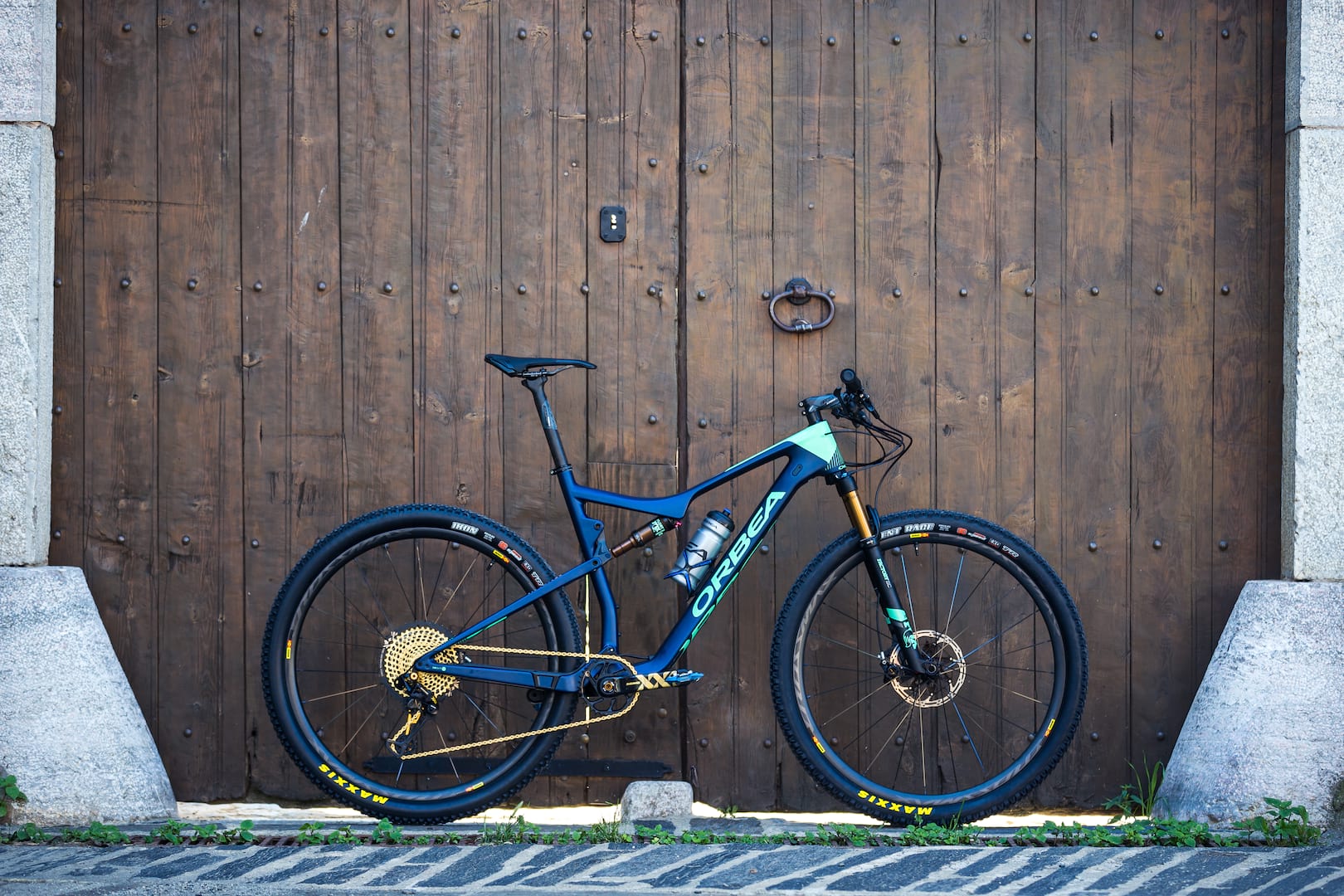
The original concept has always been to design a lightweight XC bike that would ride as fast as a hardtail, with the comfort and technical advantages that full suspension brings to the aprty. To achieve that, Orbea has gone heavy on the features with the new Oiz, which includes buzzwords like ‘Fibrelink’, ‘Inside Line’, ‘UFO 2 Suspension’, and ‘Monocoque EPS’.
Buzzwords aside, the big news is that the Oiz is now available in two versions, using the same frame but producing two different personalities. There’s the 100mm travel ‘XC’ model, which is purpose-built to be the ultimate World Cup weapon, and then there’s the 120mm travel ‘Trail’ model, which is the marathon specialist that’s equipped to take you up, along and down with more comfort and more nouse on the techy stuff.
Here are the key details across both platforms:
2019 Orbea Oiz Features
- Lightweight, short-travel full suspension race bike
- OMR monocoque full carbon fibre frame
- UFO 2 single pivot suspension design w/Fibrelink
- Custom Fox Float DPS shock w/I-Line remote lockout system
- Rear suspension travel: 100mm (XC), 120mm (Trail)
- Fork suspension travel: 100mm (XC), 120mm (Trail)
- 69° head angle (XC)
- 75° seat angle (XC)
- 435mm chainstay length
- PF92 bottom bracket
- Boost 148x12mm thru-axle
- Tapered head tube
- Available sizes: Small (27.5in wheels), Medium, Large & X-Large (29in wheels)
- Complete bike RRP: £4,199 – £6,699
The Oiz will be available in off-the-peg models, as well as through Orbea’s ‘MyO’ program that allows riders to customise things like tyres, dropper posts, forks and saddles. You can even choose your own special paint job too.
All frames will be made from carbon fibre. The appearance of the frame has been simplified by replacing the distinct top tube and triangulation on the downtube of the previous generation with sleek straight lines creating not just a better looking frame, but a stronger and more durable frame too. This is done by using an EPS mould that reduces wrinkles internally over the entire structure ensuring better layered fibres. There’s a small 50g weight bonus over the old frame, but as the weight weenies say; “grams make kilograms!”
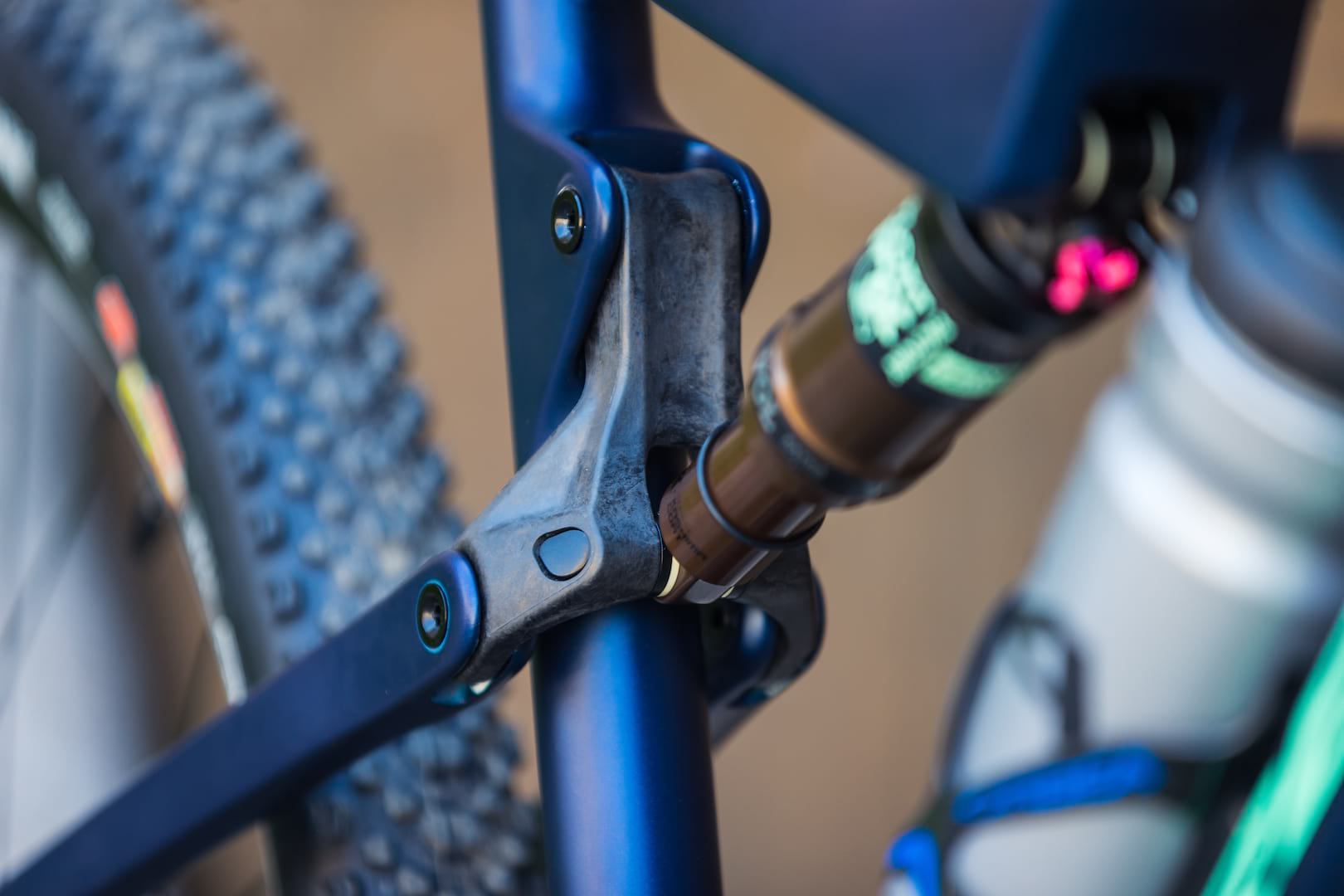
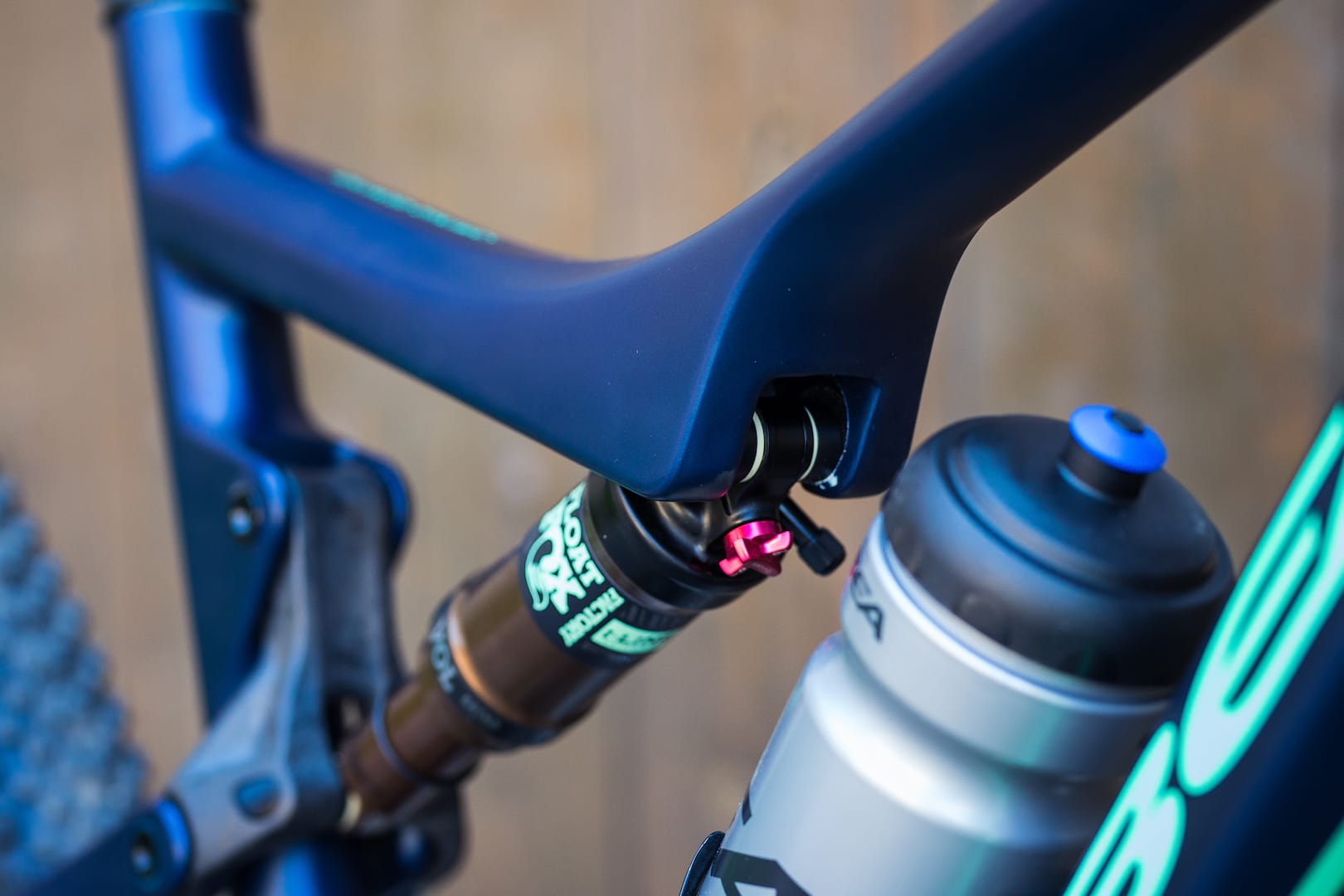
The shock mount is one key area of change, with Orbea drawing on 3D CNC machines to help achieve a more precise finish for both front and rear eyelets. A big reason for using this method is down to the patent pending Inside Line rear shock, which has been custom made by Fox for Orbea. It’s essentially a Float DPS shock with a special mount for the remote lockout cable, which now sits inside and inline with the top tube. This means the remote cable runs straight through and out of the frame with no bends, only on exiting the frame to the lever, which produces less friction through the cable to give a smoother and faster response at the lockout remote. Additionally, the clean internal routing for the shock lockout has also created sufficient space for two water bottles – another big thumbs-up from me.
The new Fibrelink that’s used to drive the rear shock is made from one piece ‘aerospatial’ carbon material weighing only 59 grams. This reduces the lateral flex over the earlier link and the need for the strengthening pin which was prone to rattle on 2017 versions. Internal cable routing is now fixed at both the entrance and exit of the frame silencing any cable rattle, as this was a minor issue on previous models that has been addressed and cured.

The rear swingarm is a pivot-less one-piece carbon fibre structure, that is designed to flex slightly through the seatstays as the suspension goes through its travel. Orbea is calling this ‘UFO 2’, and it’s otherwise a fairly standard arrangement used on other full suspension XC race bikes like the Scott Spark, Canyon Lux and KTM Scarpe. However, Orbea is keen to stress the importance of its CNC machined shock pivots, which it says allows everything to line up smoother. On top of that, full complement Enduro Max cartridge bearings are used in the main pivot and for the Fibrelink, with Black Oxide ball bearings supposedly providing 35-40% more load capacity and improved rust resistance.
The suspension platform is the same on both the XC and the TR models, with only a longer stroke shock (45mm vs 40mm) allowing the TR model to get an additional 20mm of travel. The eye-to-eye length of the shock remains the same at 190mm, which means the geometry and suspension kinematics aren’t too different between the two bikes.
Here’s a rundown of the key differences in the platforms:
XC Spec
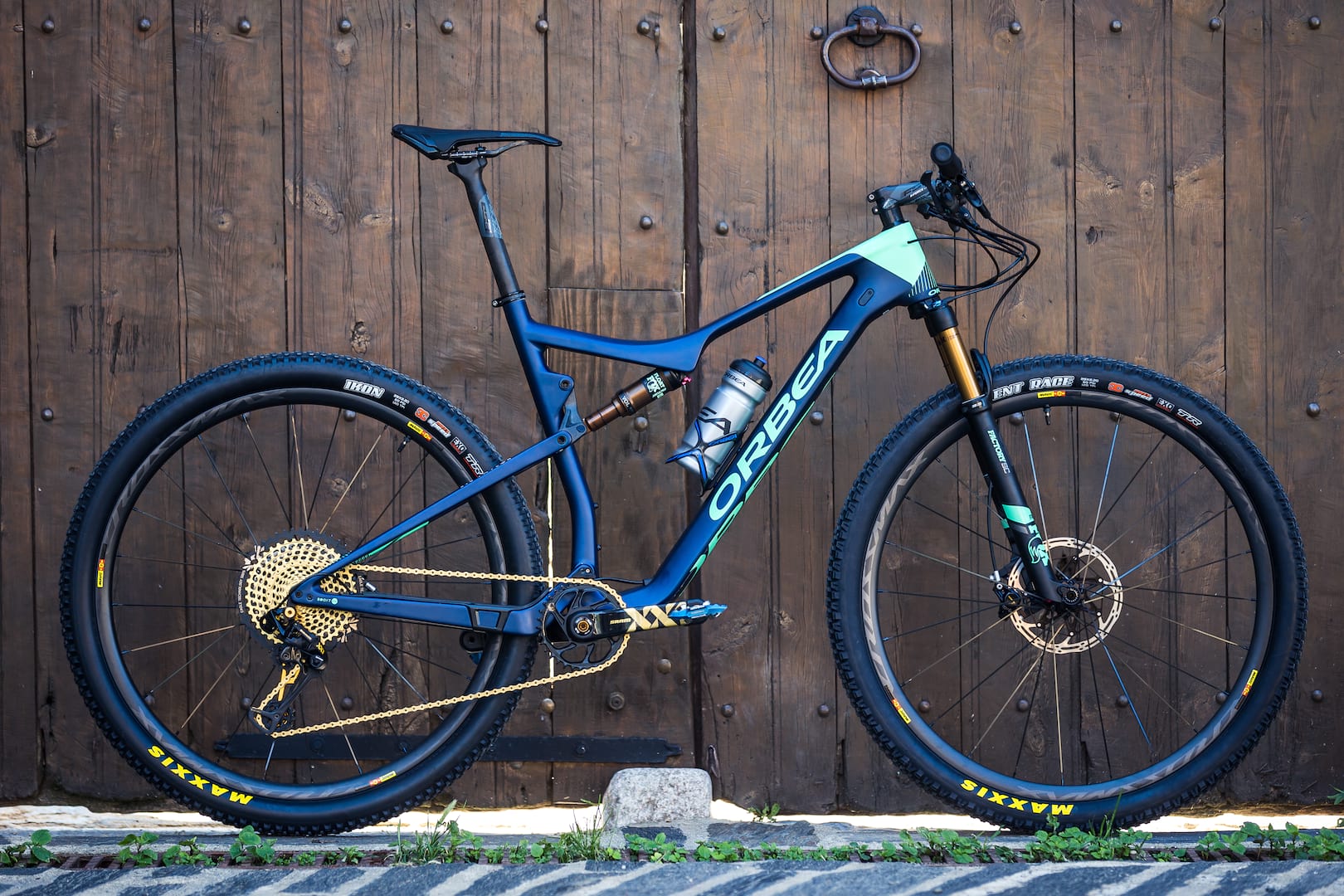
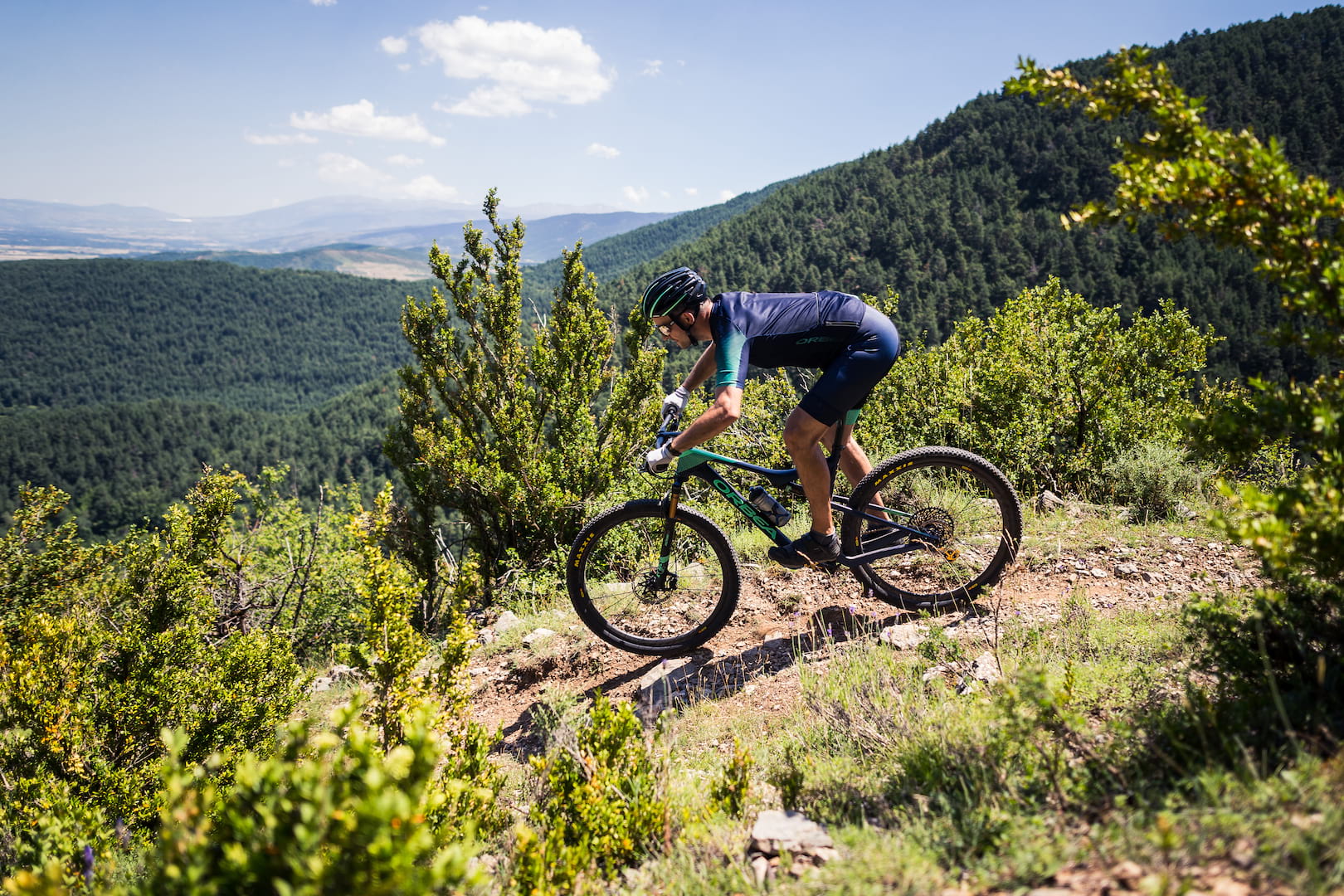
- Fork: Fox Factory Step-Cast 32 100mm Travel
- Shock: Fox Float DPS I-Line 190x40mm
- Handlebars: 740mm wide
- Seatpost: FSA SLK/K-Force rigid post.
- Tyres: Maxxis Ardent 2.25in Front & Ikon 2.2in Rear
Trail Spec
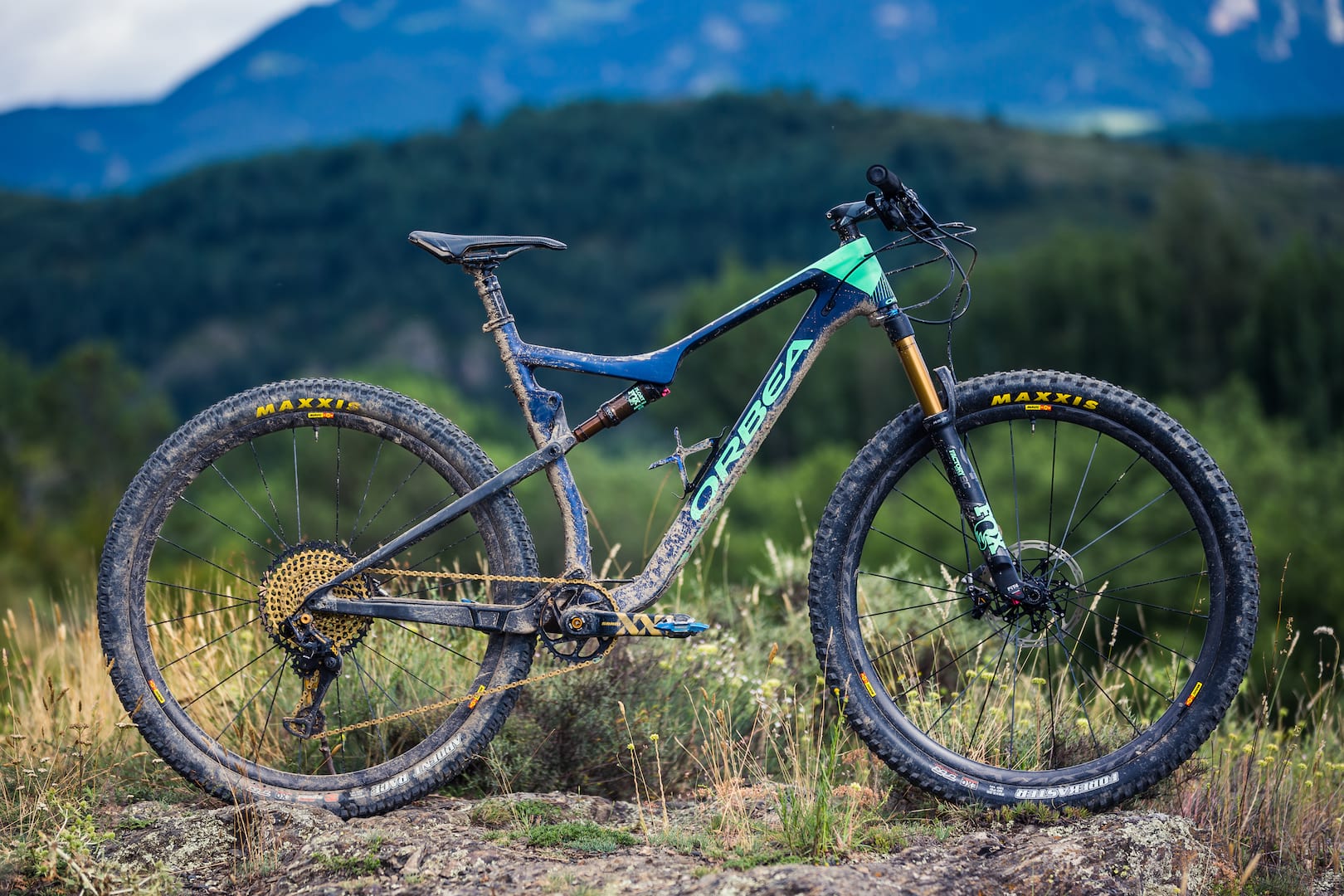
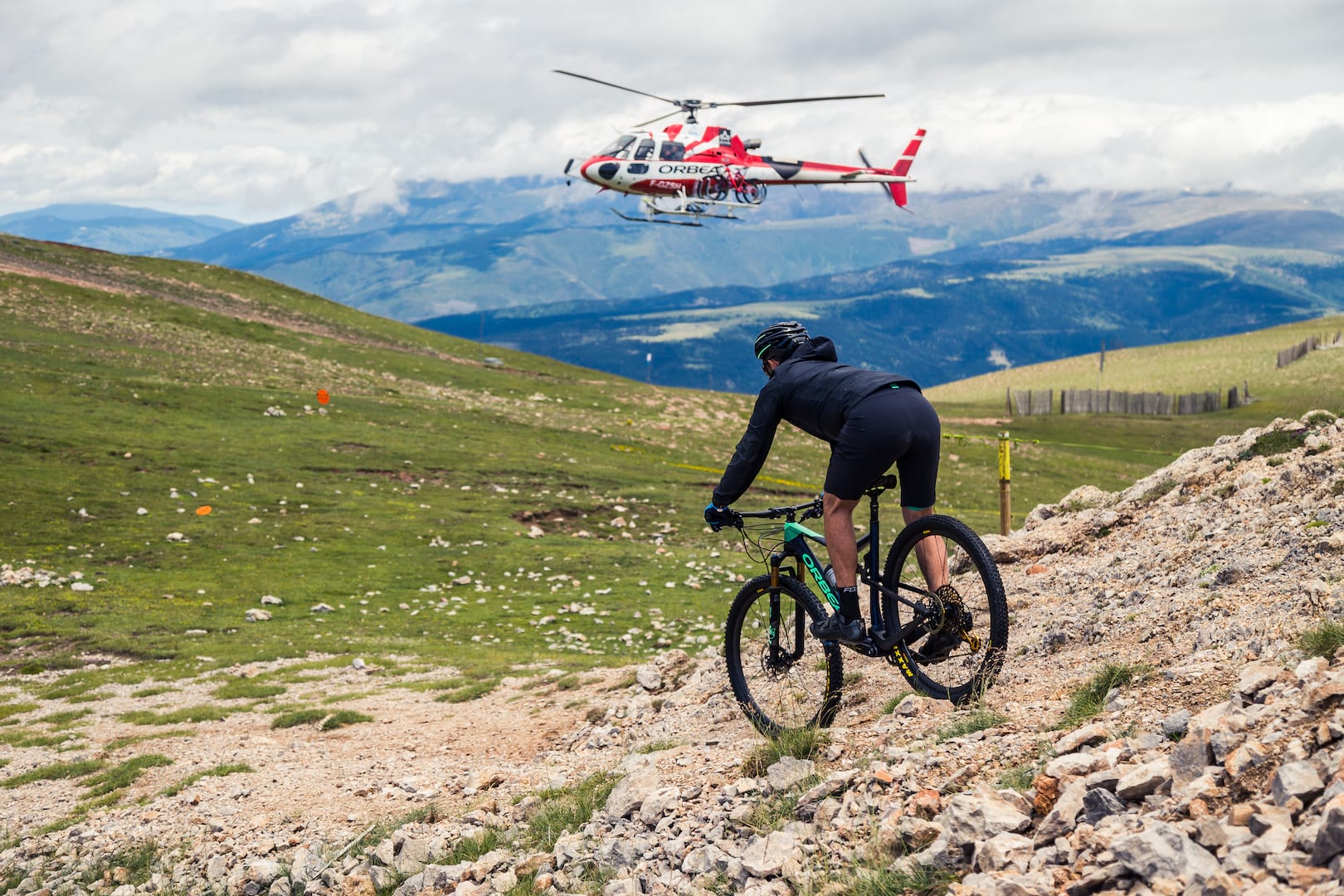
- Fork: Fox Factory Step-Cast 34 120mm
- Shock: Fox Float DPS I-Line 190x45mm
- Handlebars: 760mm wide
- Seatpost: Race Face Aeffect 125mm dropper post
- Tyres: Maxxis Forecaster 2.35in Front & Ardent 2.2in Race Rear
After riding 1000’s of miles and spending hours, days and weeks aboard the 2017 Oiz, I had my own opinions of what could make this XC rocket better – especially for riding around the UK and the Lake District, where I spend the majority of my ride time. When I heard that Orbea was launching a Trail version I was very excited to see what this had to offer and whether it could step it up a notch.
First Ride Impressions
With the dropper post slammed down, and with its slacker head angle and meatier tyres, the Oiz TR instantly looks fast in an American muscle car kind of way. Compare that to the leaner XC version, which is more of a purist F1-like race machine.
After getting set up, straight away you could feel the difference over the XC model, with the TR sitting slightly deeper in the travel in a more relaxed position but still with plenty of purpose. After a couple of short steep rocky climbs and a tight twisty singletrack descent it was hard to really to split the two models on the climbs, but on the decent the TR was a different beast all together – this thing can shift!
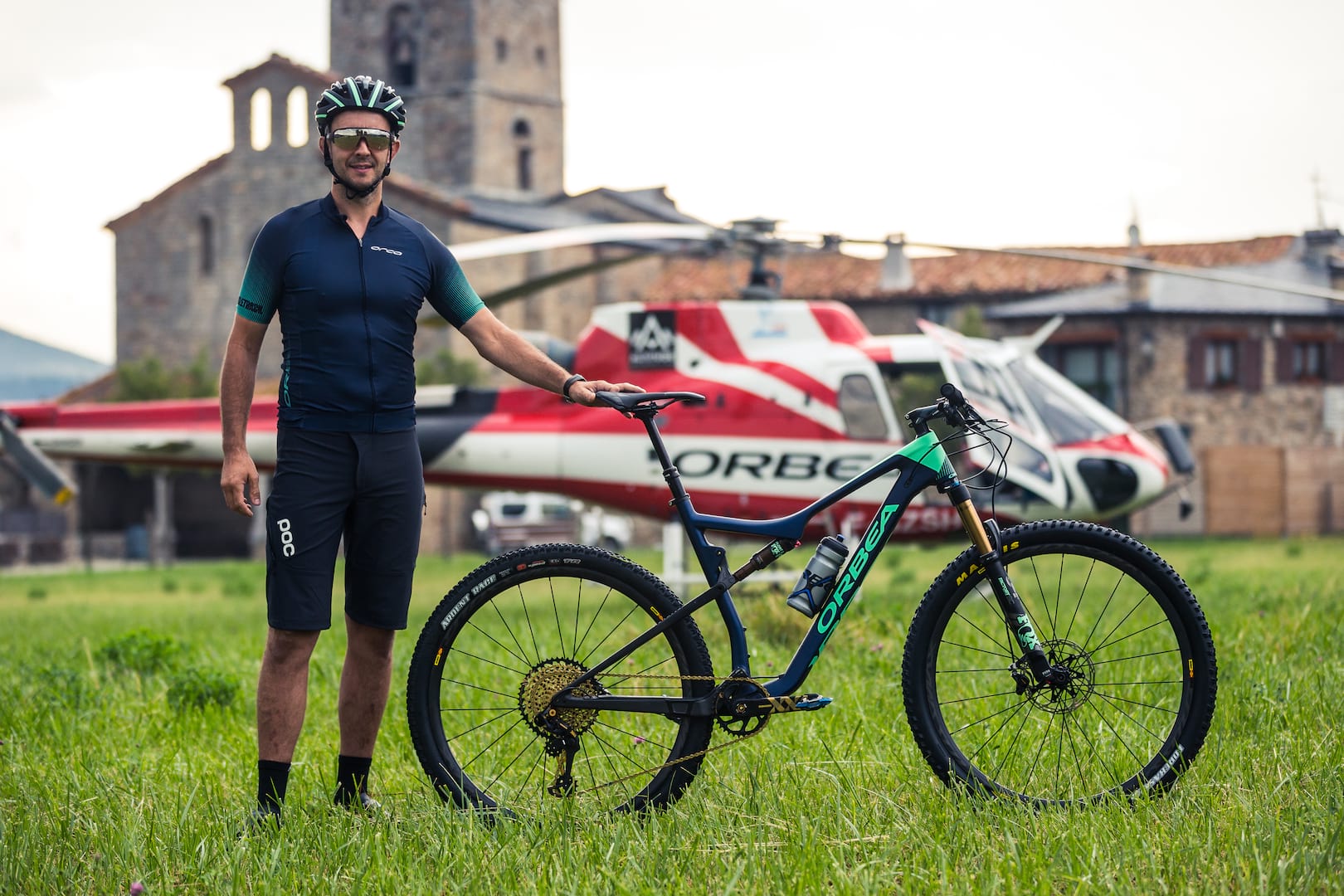
The real test was yet to come, and what a test it was with a specially commissioned helidrop to the top of La Molina bike park. Having landed and unloaded our bikes, we then followed a twenty five mile return journey with over eight thousand feet of descending and only two thousand feet of elevation back to base.
Climbing
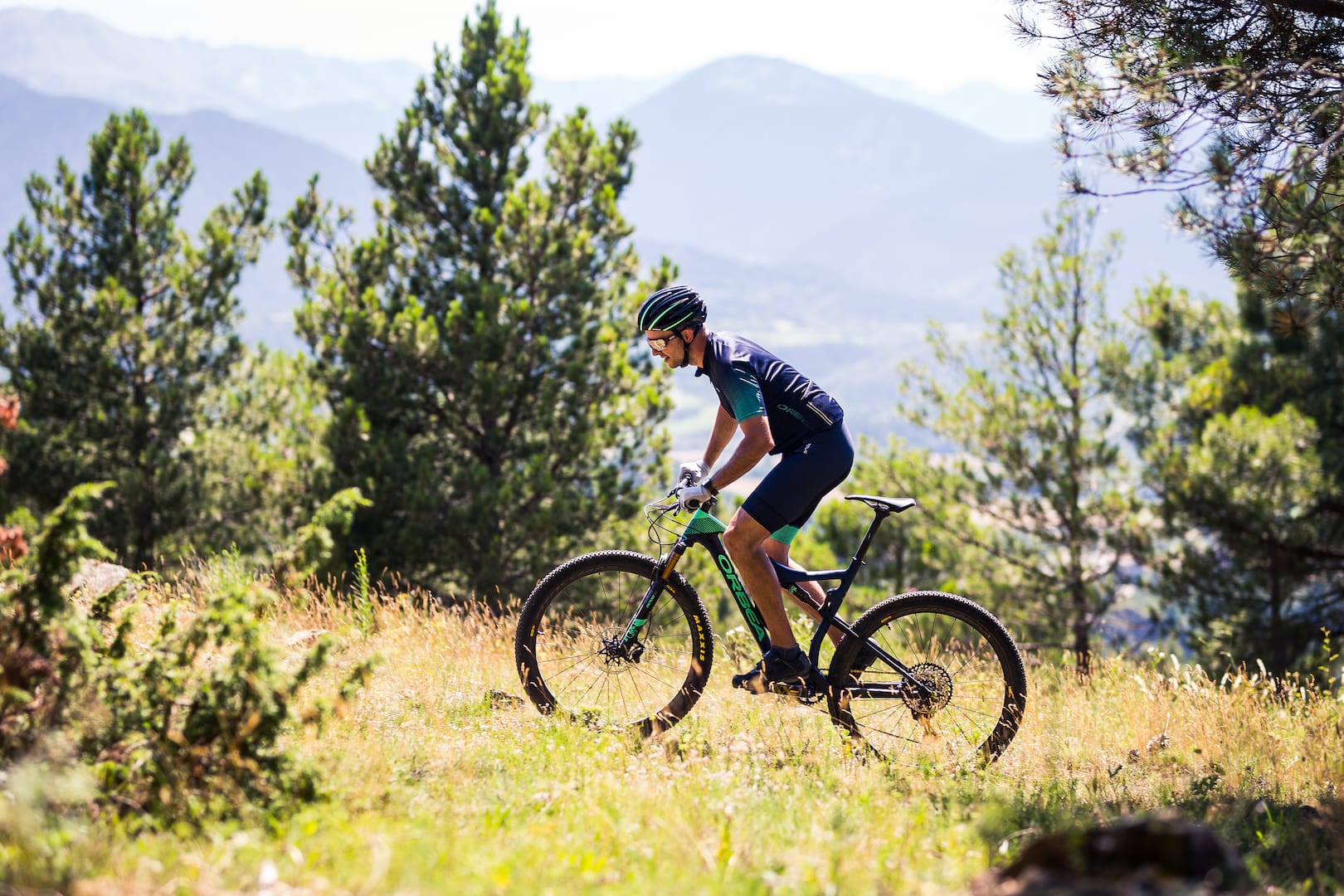
Both bikes at heart were born as XC bikes so climb extremely well. The XC though, just gets the nod when the climbs get super steep; sitting higher in the travel, the bike was glued to ground and climbed everything asked of it. In comparison the TR on the steepest of steep climbs did bob around slightly on the front end and required a little more effort to reach the top but it still got there. This could be helped by dropping the stem 20mm to counteract the 20mm gained from the extra fork travel.
Descending
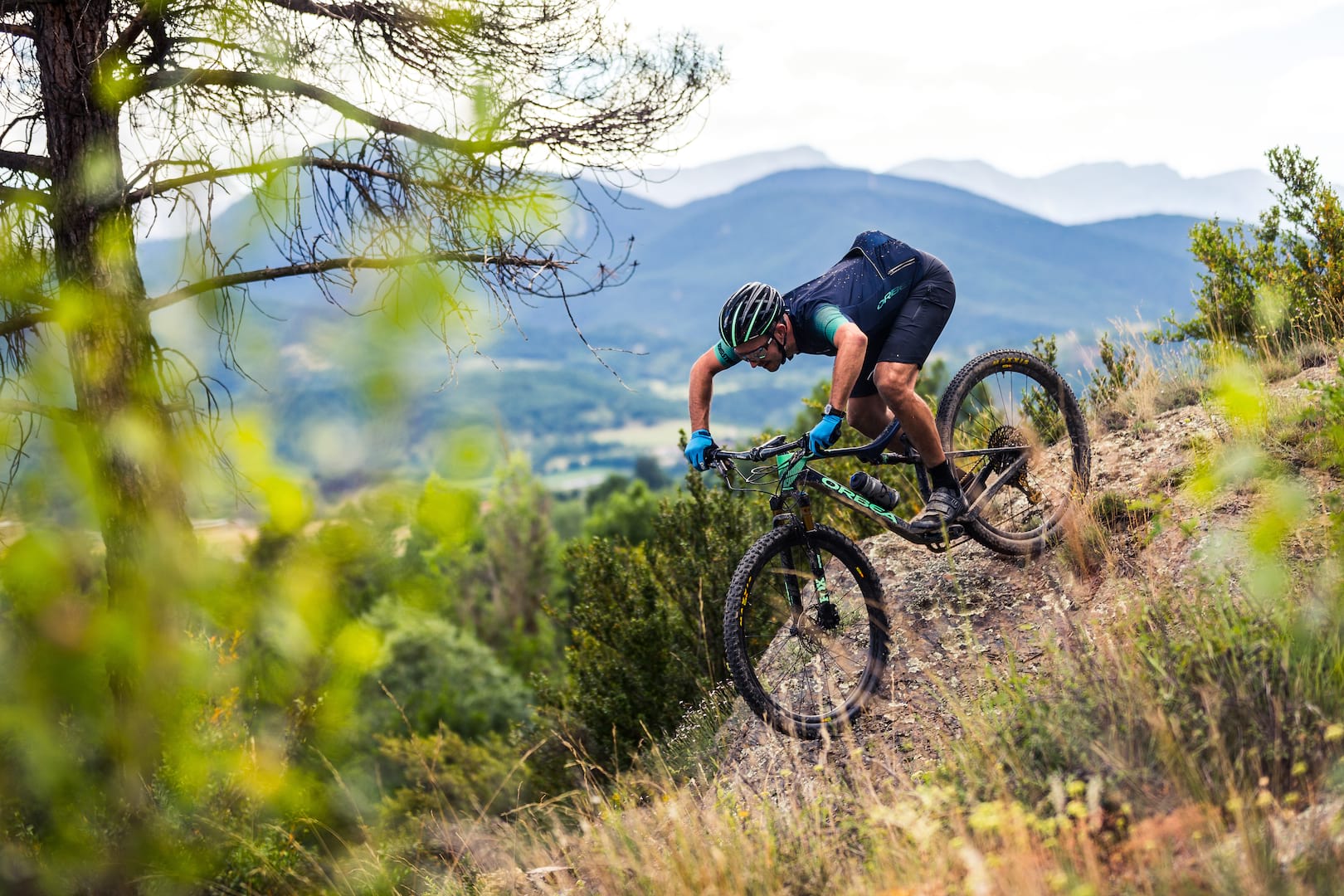
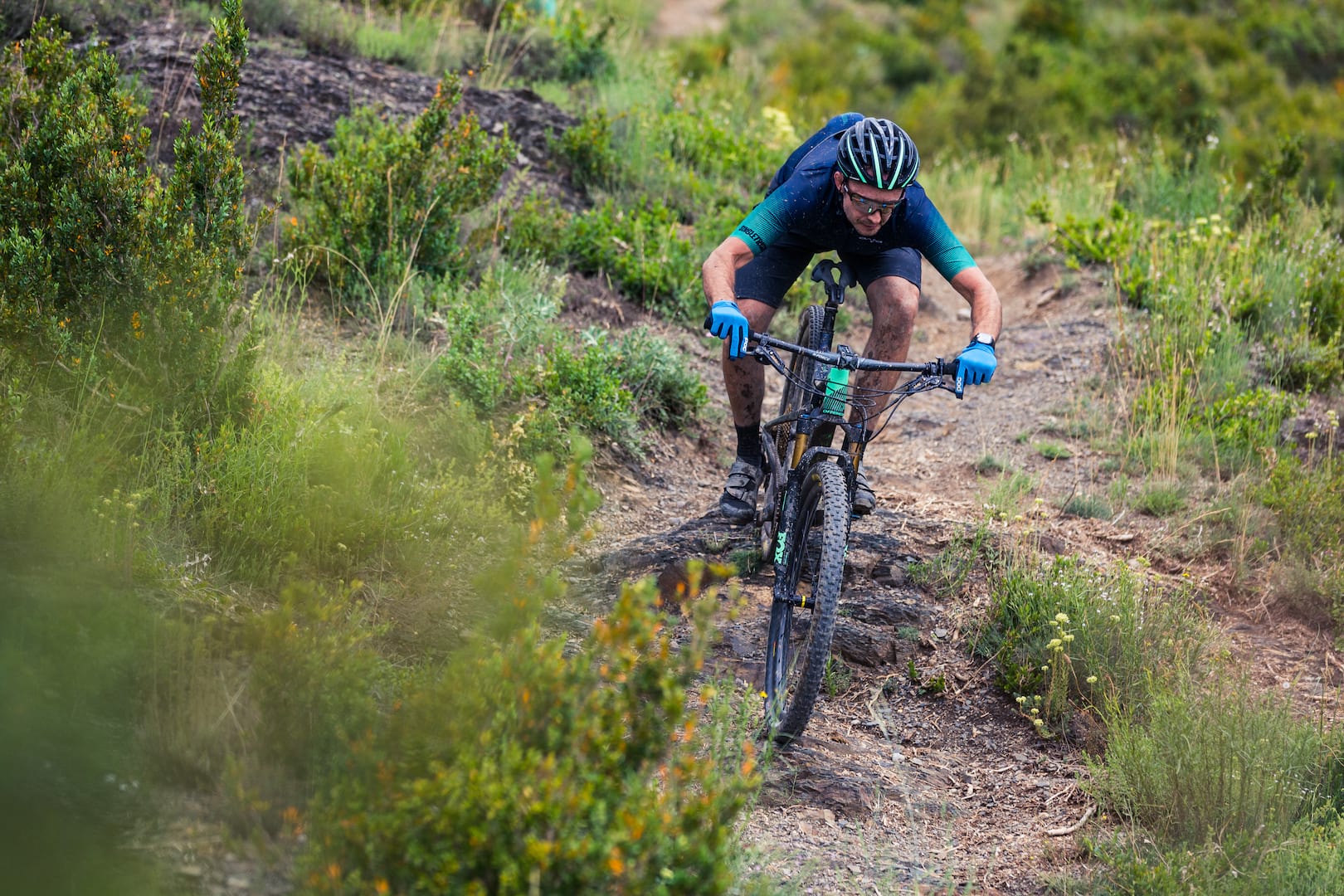
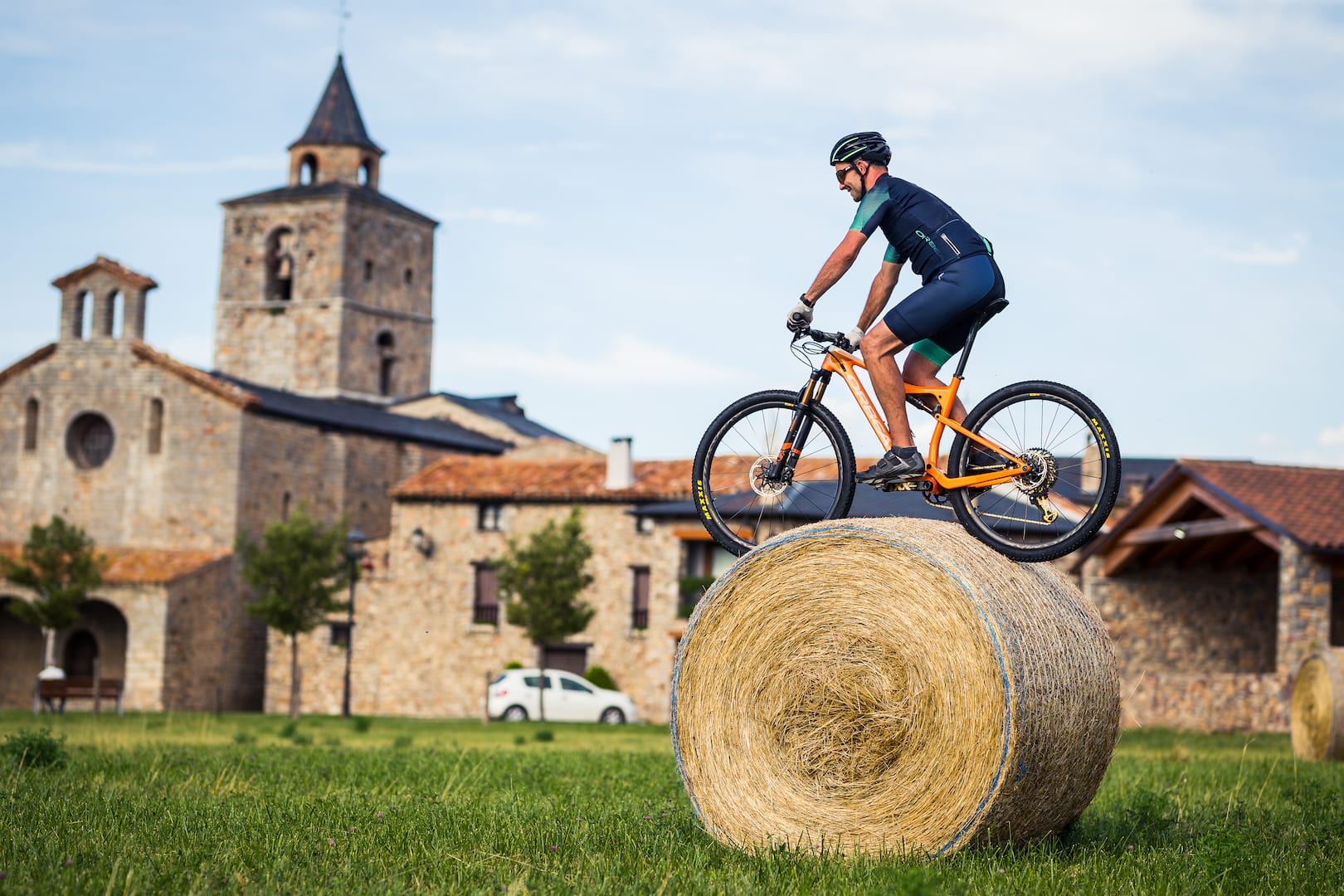
This is where the difference really becomes apparent. The XC is fast at descending but it does require more skill to ride. The old school riders won’t mind, with the saddle high and skinnier tyres you do really have to pilot the bike. In comparison, the TR for me has to be one the fastest 29er trail bikes I’ve personally ridden downhill. The bike feels nicely balanced thanks to the custom-tuned Fox suspension initially feeling plush over the small stuff but turning really progressive late in the travel to give an almost bottomless feel in a 120mm package. I tried my hardest to bottom it out, but I couldn’t quite eke the last 4mm out of it, even over all types of terrain at the La Molina bike park including jumps, steep natural trails, swoopy fast flat-out singletrack.
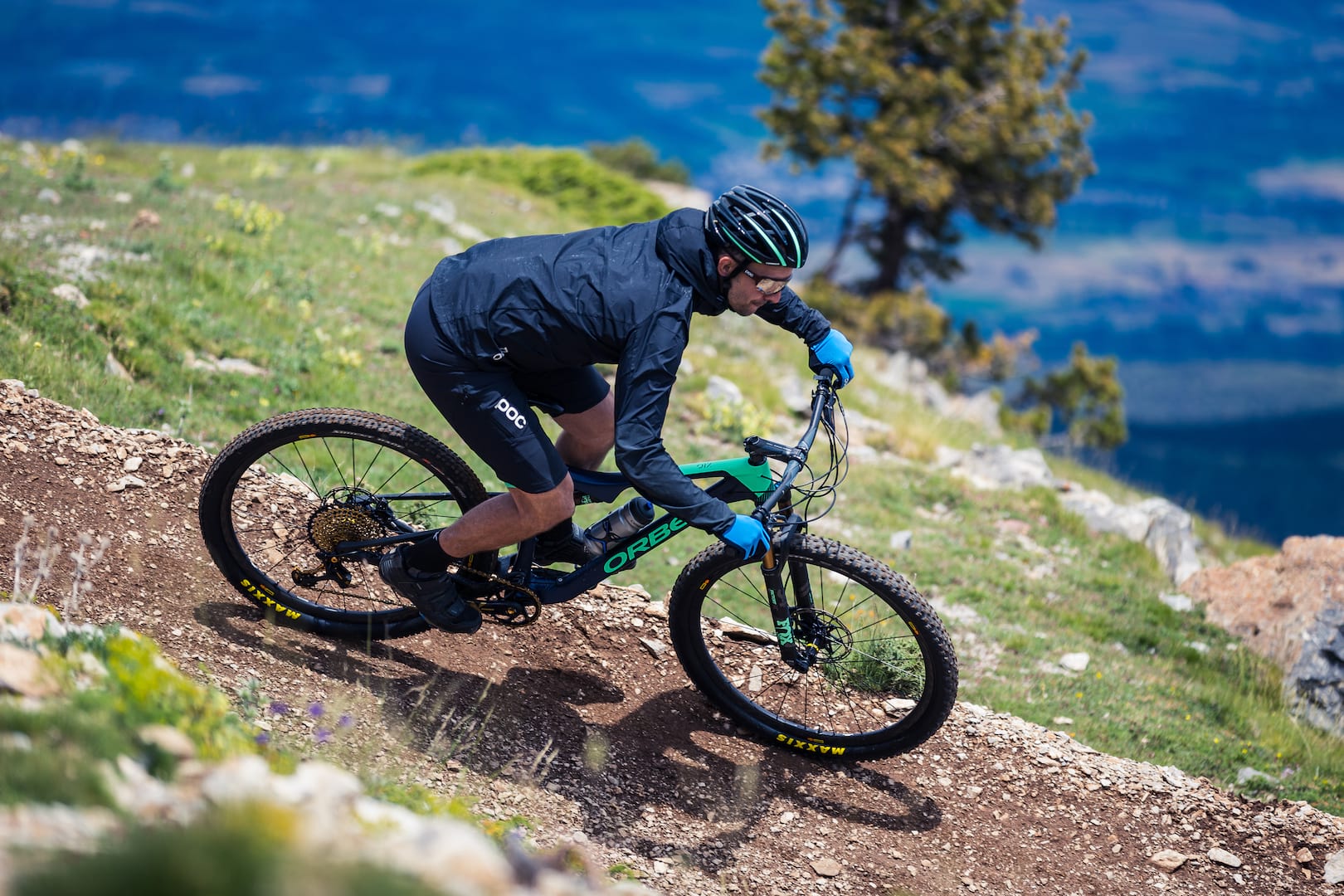
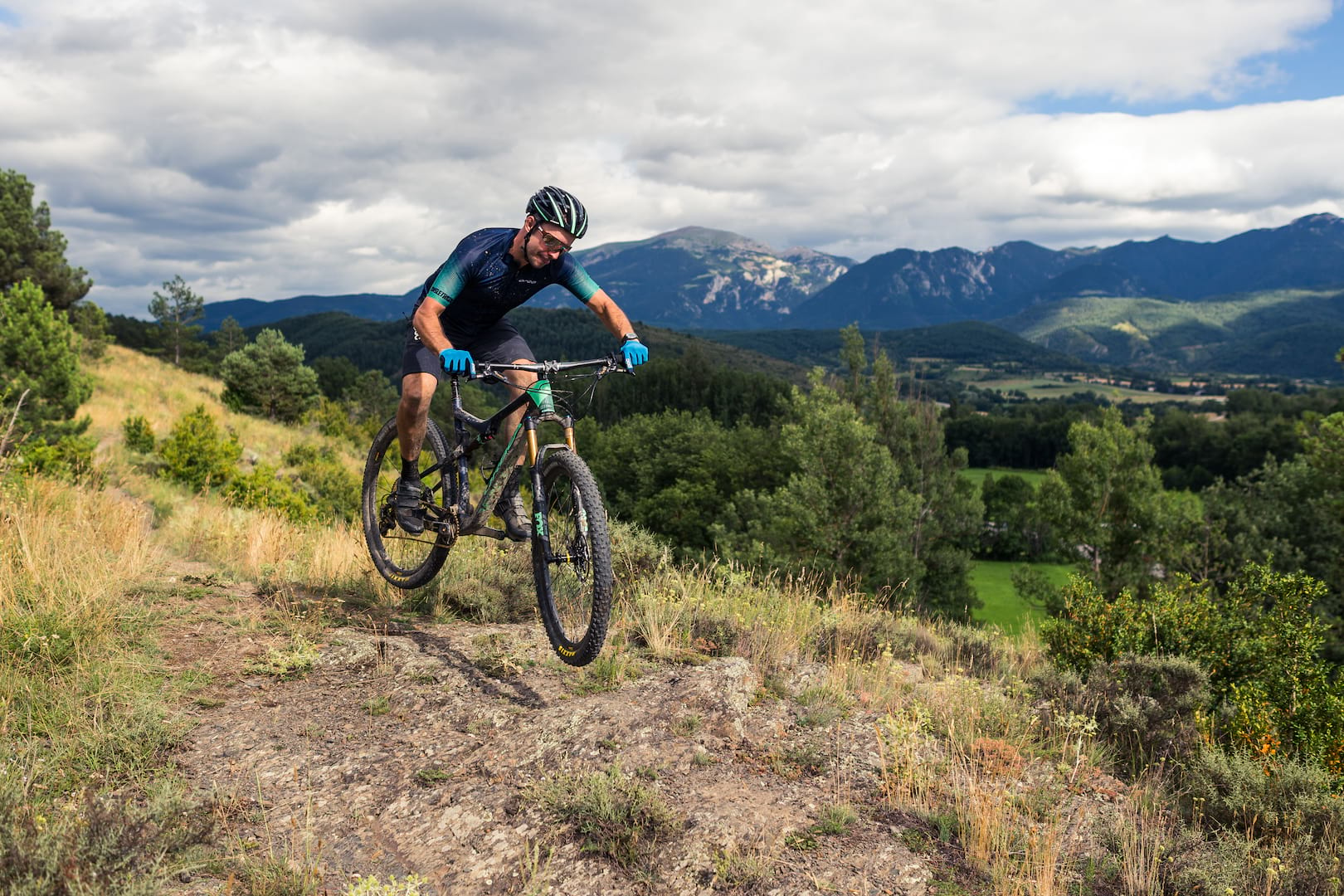
Overall
So which one to go for? If you’re an XC racer, go for the 100mm model – pure and simple. For anyone else, go for the TR – it’s light, fast, super capable and such a fun trail bike.
Disclosure
Stu’s travel and accommodation was paid for by Orbea.






Rare sighting of “clipless” out in the field!!
Where were you riding? Looks good. Nice bike too.
Thanks for taking the time to write this. I know from Orbea’s Instagram account that they press ride was a few weeks back. Since then, only one other English site has bothered to write about the bike. The other review I read was from a Spanish site. It’s pretty lame, to be honest. It’s not all about burly tires, long travel, and dropping in, it doesn’t get covered. There must be 6 articles this week on the Giant Trance get 29′ tires.
Agreed. Cant find any full reviews anywhere which is a real shame as the TR looks like an awesome bike
Dear Mr Stu’s. Nice technical review from Orbea’s new Xc and TR bike rigs.
How could the xc and TR orbea oiz’s compare with the Santa Cruz Blur ?
Best regards,
Ricardo
I’d be interested in a long term review to see if others are having problems.
I have the OIZ 29 M10 TR and after 4 months of riding the pivot points for the rear triangle had a lot of play and the bike was flexing. Brought it back to the store where I bought it and when they took the frame apart to inspect the press fit bearings, they fell out they were so loose. Orbea won’t commit to a time fix and says the parts have to come from Spain and don’t know if they are in stock.
I like the bike and hope it is a one off. But so far the quality and the customer support experience have me regretting buying an this bike.